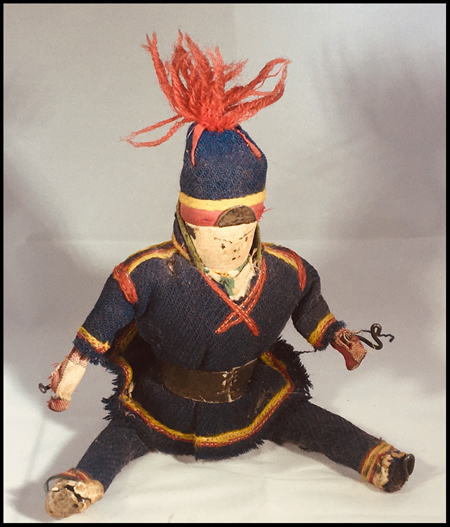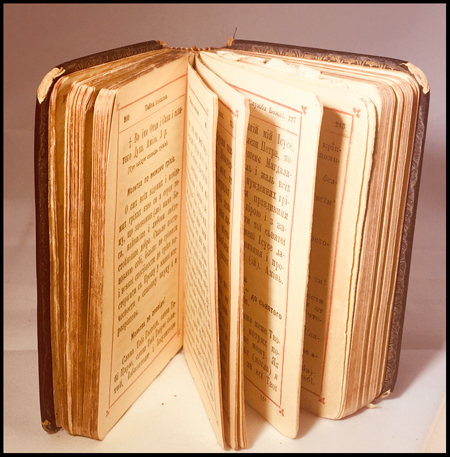
 Local artist nabs NEA grant for work on ‘story objects’ that root people
Local artist nabs NEA grant for work on ‘story objects’ that root people
By Free Press staff
Funding for an Individual Artist Grant from the National Endowment for the Arts has been awarded to local visual and literary artist Sonja Horoshko, through the Colorado Creative Industries in Denver.
Her project, “Satchel,” involves two decades of personal-identity exploration that has interested her since she had a 12-month arts residency at Hovenweep National Monument in 1995-96. At that time she founded a place-based visual arts workshop, Drawing Together, providing a local platform for the surrounding communities and families to render the land and people in-situ.
During those drawing/painting sessions, many Navajo children and adults politely asked her, “Where are your people, Auntie?” She answered, “In Denver – the West Side.” But the question ignited an in-depth investigation into her loss of cultural identity and influence. “Who am I, and where are my people?” became the guiding personal inquiry in much of her body of work.
Horoshko has four valued family objects that she brought with her when she came to Cortez from Denver in 1992. Two are from her paternal Ukrainian family, and two were bequeathed to her from her maternal arctic Swedish family.
They became “story objects” for her – the things that kept her relationship to family alive. One is a tiny, leather-bound pocket-size publication that, until recently, she thought was a Ukrainian Orthodox Missal, a portable book containing the Mass published in Ukrainian. She doesn’t speak or read her paternal language, but she asked her cousin, Andrew Guzo, Ph.D., to investigate it for her at a New Jersey Ukrainian Community Center near him.
The elder woman translating his request asked, “What’s the family name?”
In a guttural pronunciation, he replied “Khorowshko.”
She simply said, “Well, of course,” Guzo said, as if their family name was commonly known. This surprised Horoshko and Guzo because it never seemed ordinary to any family members.
“The first page is a Prayer to Holy Mother Mary,” she explained, and then translated what pages he showed her from the photos on his cell phone. It is a portable Book of Prayers, not a Missal, she said. “The prayers traveled with him.”
After Stalin starved Horoshko’s remaining Ukrainian family in the early 1930s, Horoshko family members were reluctant to say more than that her grandfather’s family were simple sunflower farmers from the land between Lviv and the border of Poland today. But Horoshko also has a canvas passport holder used by her grandfather when he came to Ellis Island in 1907, alone. He was 11 years old. In his pocket he carried the equivalent of $30, and in his heart he carried his family’s hope that he would survive to begin a family of his own in the United States.
He was picked up by a Pennsylvania coal-mining company and brought to Wilkes Barre, where there was a Ukrainian Orthodox community of families working for that company. “It was a beginning of the story about where we come from,” Horoshko said, “what was expected of my grandfather and who we are.”
Horoshko also cares for two items given to her by her maternal grandfather, who arrived in the United States from Norbotten County in the Swedish Arctic Circle — a tobacco pouch and a doll belonging to her grandmother.
“Identity locates an individual in community at the beginning of migration, relocation, refugeeism, and so forth,” she said. “All people have moved at some point. Many still do. We come from somewhere. We go to other places. In the United States our cultural amalgamation is so extensive that our deep beginnings are growing more vague.”
Her project will result in a late-summer exhibition of her personal visual art in collaboration with professional artists she has invited to the project. Each has a story object to share. They include Renee Podunovich, Sam Lyons, Denver architect Michael Murphy, Irene Hamilton, Michael Thompson, Tina Deschenie, Silvia Pina, Joan Roberts Garcia, Ed Singer, Cindy Yurth, Maurus Chino, and Mondo Jud Hart, an artist she has known since their first days as students in the undergraduate fine arts department at the University of Denver 60 years ago.
Horoshko is also offering workshops for the local community. “Being an artist or writer is definitely not required,” she said. “In fact, it is more the local common story-ground I am seeking to turn over, to shine a light on a story and keep it alive for the participant. Where do you come from? Who are your people? Does an object help carry your story forward?”
The story object can also be something used when an individual is on call for job-related work, such as oil-field workers, or archaeologists, or even a family’s annual sheep or cattle drive to higher pastures.
“I am not just interested in immigration and people fleeing war, famine or natural disaster,” Horoshko said. “People have always moved for many reasons and they always carry items of value in their carpetbags, satchels, shoeboxes and backpacks.”
The workshops will offer an opportunity to tell the story of a family object revered by someone living in Montezuma County. Each participant receives a workbook explaining the project and how to proceed, time with Horoshko to photograph the object, and a published, framed 11 X 17 broadside of the results. An exhibit of the finished work will be held at the Montezuma County Heritage Museum in late summer 2022 simultaneously with the final exhibit of the professional project artists at Turquoise Raven Art Gallery.
Workshops will be held at the Montezuma Heritage Museum from 2 to 3 p.m. on Saturday, May 21, and Saturday, June 4. An additional two will meet at Turquoise Raven Art Gallery in Cortez from 2 to 3 p.m. on Saturday, May 14, and Saturday, May 28.
For more information about the workshop materials fee and to sign up, contact Sonja Horoshko directly at artjuicestudio@gmail.com with memo line “Satchel Workshop,” or text the same line to 970-565-0715.








